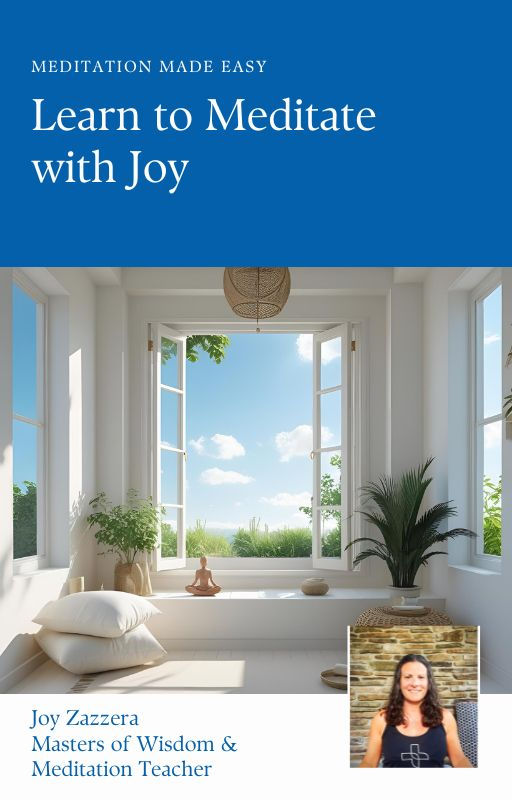What Happens When You Sit Still To Meditate
- Joy Zazzera

- Apr 6
- 4 min read
Updated: 4 days ago
What happens when you sit still to meditate isn’t always what people expect. While the image of meditation often suggests immediate peace and silence, the reality can feel quite different—especially at first. Sitting still to meditate may seem simple, but it can awaken a wide spectrum of internal experiences—some subtle, some surprising. For many beginners, the first time they pause to try meditation, reveals a noisy inner world: thoughts racing, sensations rising, memories surfacing. This is not a sign of failure; it’s a natural part of the process. Meditation isn’t about “doing nothing" or turning off thoughts. It’s about gently witnessing whatever arises within you—without judgment or resistance. When you begin to understand what’s actually happening during meditation, it becomes less about perfection and more about practicing presence.
Meditation involves only three activities: thinking, hearing, and feeling. And there are only three things you can truly experience during it: (1) falling asleep, (2) having thoughts, or (3) drifting into stillness and silence—what Davidji calls “the gap.” All of these are signs of a verified meditation experience. Everything else—worry, memories, expectations, visuals, sounds, or sensations—is just a form of thought. As long as you’re alive, these experiences will arise. The practice isn’t about eliminating them, but learning to observe them without attachment or creating emotional meaning.

Thoughts are part of the practice—especially when stillness is new. If your mind starts bouncing between boredom, your to-do list, a relationship conversation, or the classic “I must be doing this wrong,” know that it’s all normal. The goal isn’t to eliminate thought—it’s to stop chasing it. Instead of pushing thoughts away, just notice them and return to your anchor—whether that’s your breath, a mantra, or a body sensation. Here is the only secret to meditation you need to remember: That gentle drift between presence and thinking is the practice.
Sound is not a disturbance—it’s part of the landscape. We can’t turn off our ears, and we’re not trying to. If a sound catches your attention and stirs a memory or thought, simply guide yourself back to presence. You’re not doing it wrong. The art of meditation lies in gently returning—again and again—to your chosen point of focus, whether it's the breath, a mantra, or just the feeling of sitting.
Your body will talk to you—listen with kindness. Sensations will come and go. If your foot falls asleep or your back starts to ache, there’s no need to power through it. Uncross your legs, stretch, adjust your seat—then take a few steady breaths and ease your way back into your meditation. Begin your practice in a position that feels sustainable and relaxed. Meditation isn’t about enduring discomfort—it’s about creating the conditions for stillness to emerge. If you’ve just finished intense exercise, give yourself a few minutes to cool down so your breath can settle.
And while it may be tempting to combine meditation with substances like caffeine, cannabis, or alcohol, it’s best to let the practice stand on its own. Stillness works best when your nervous system is clear, so you can experience what’s truly present without the haze.

Stress often leaves the body the way it entered—through sensation. As you settle in, you might feel the release of built-up tension. Some people sigh, smile, or cry. Some feel a physical shift—warmth in the hands, a subtle tingling, or gentle waves of sensation moving through the body. Others feel light or heavy, grounded or lifted. These are all signs of stress moving through and out of the body.
Some people see with their mind’s eye. If you're more visually attuned, you may notice flashes of color, symbols, geometric shapes, or even mental images—faces, places, or scenes from memory or imagination. Some people see loved ones or even unknown faces. None of this is unusual; it’s just the mind doing what it does when it relaxes. Simply observe without grasping for meaning.
And yes, sometimes you might fall asleep. That’s okay too. Falling asleep during meditation can be a sign your body needed deep rest—and that your nervous system trusted the stillness enough to let go. If it happens often, it may be a cue to check in with your sleep hygiene. But in the moment, allow it. Sometimes rest is the practice.
No two meditation sessions are ever quite the same, but each one gives you a chance to return—to your breath, your body, your awareness, your Self. Whether you drift into silence, find yourself tangled in thoughts, or even fall asleep, every experience holds value. The more you sit, the more you’ll discover that meditation isn’t about escaping your inner world—it’s about becoming familiar with it. And with each gentle return to stillness, you cultivate trust—in the practice, in your body, and in the transformative power of simply sitting down and being.

👉 Want more expert guidance on developing a confident meditation practice?
Download my free digital Ebook, “Meditation Made Easy: Learn to Meditate With Joy,” and get instant access to the guide with a bonus Step-by-Step Daily Practice Guide included—just subscribe with your email to receive it all!
References
Cruikshank, Tiffany and Bismark, Rashmi, Yin & Meditation, Yoga Medicine, 2022
Cruikshank, Tiffany and Sedgwick, Amy C., Nervous System & Restorative Yoga. Yoga Medicine, 2021
Davidji, destressifying. Hayhouse, 2015.
Davidji, Secrets of Meditation. Hayhouse, 2012.
Davidji, Masters of Wisdom & Meditation Teacher Training Manual & Lecture Notes. Davidji Meditation Academy, 2025.







Comments